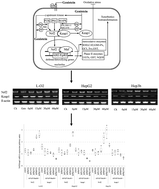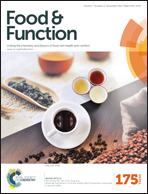Genistein promotes the metabolic transformation of acetaminophen to glucuronic acid in human L-O2, HepG2 and Hep3b cells via the Nrf2/Keap1 pathway
Abstract
This study aimed to explore the effects of genistein on regulating the activation of UGTs via the Nrf2/Keap1 pathway and to elucidate the underlying mechanisms of detoxification and hepatic protection. Experiments monitoring genistein-induced protection against acetaminophen-induced cell damage were performed in L-02, HepG2 and Hep3b cells. The results of the MTT, AST, ALT, LDH, GSH and GSSG assays showed that genistein evidently protected the cells from acetaminophen-induced injury in a dose-dependent manner. The control cells were treated with 10 mM acetaminophen without genistein to compare with the effects of the combination of acetaminophen and genistein on the expression of UGT1A1, 1A6 and 1A9, Nrf2 and Keap1 mRNAs, as well as the expression of Nrf2 and Keap1 proteins, which were tested by western blotting. The results showed that the expression of the Nrf2 mRNA and protein increased; in contrast, the expression levels of the Keap1 mRNA and protein were obviously reduced by genistein in a dose-dependent manner. Meanwhile, the expression of the UGT mRNA was increased, and UGT1A9 exhibited the highest expression among the three UGTs. Accordingly, the residual acetaminophen content was obviously reduced and acetaminophen glucuronidation increased after 24 hours of treatment with genistein in a dose-dependent manner.



 Please wait while we load your content...
Please wait while we load your content...